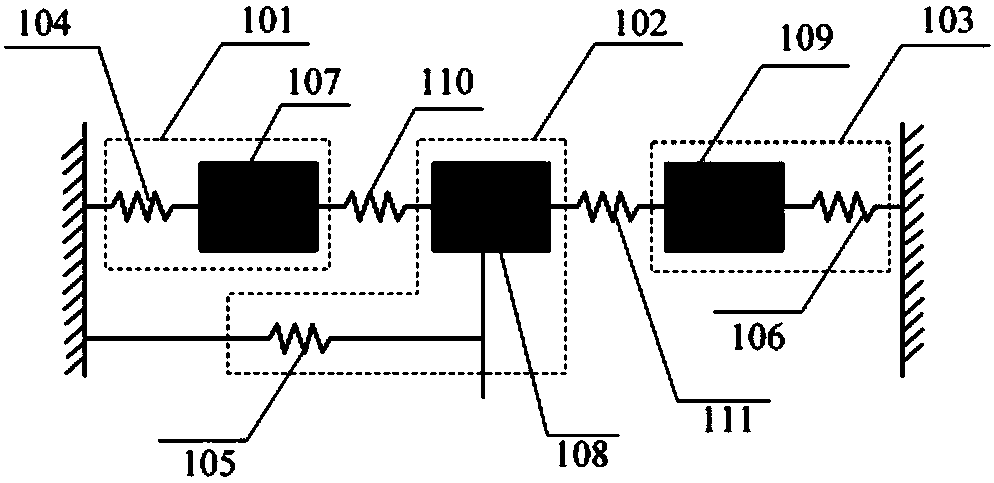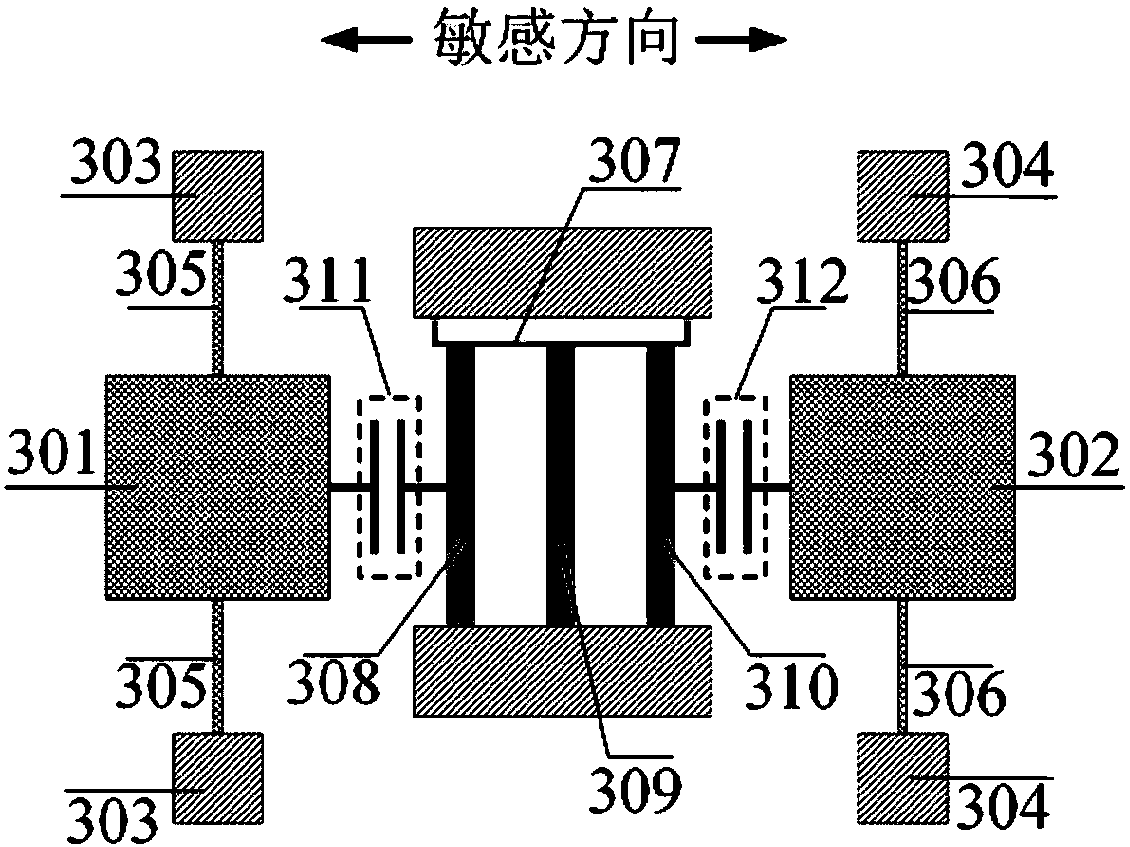Three-freedom-degree weak coupling resonant accelerometer based on modal localization effect
An accelerometer and localized technology, applied in the field of sensors, can solve the problems that the initial working point of the accelerometer cannot be determined, the measurement range of the working point is difficult to adjust flexibly, and the design of the closed-loop circuit of the working mode is difficult, so as to achieve flexible selection and linear operation. Range adjustment, improving stability and accuracy, reducing the effect of coupling
- Summary
- Abstract
- Description
- Claims
- Application Information
AI Technical Summary
Problems solved by technology
Method used
Image
Examples
Embodiment Construction
[0016] Before introducing the present invention in detail, the mode localization principle based on the weakly coupled resonant system involved in the present invention and the theoretical basis for applying the sensing mechanism to the field of acceleration detection are firstly introduced. figure 1 It is a schematic diagram of a simplified spring-mass model of a three-degree-of-freedom resonant system. The three-degree-of-freedom resonant system consists of resonator one equivalent 101, resonator two equivalent 102, and resonator three equivalent 103, as well as coupling beams and fixed anchor points composition. In the three-degree-of-freedom weak-coupling resonator designed in the present invention, the resonator one equivalent 101 and the resonator three equivalent 103 are completely symmetrical, in figure 1 In , springs are used as the stiffness models 110 and 111 of the mechanically coupled beam to equivalently represent the stiffness k of the coupled beam c , its mass...
PUM
 Login to View More
Login to View More Abstract
Description
Claims
Application Information
 Login to View More
Login to View More - R&D
- Intellectual Property
- Life Sciences
- Materials
- Tech Scout
- Unparalleled Data Quality
- Higher Quality Content
- 60% Fewer Hallucinations
Browse by: Latest US Patents, China's latest patents, Technical Efficacy Thesaurus, Application Domain, Technology Topic, Popular Technical Reports.
© 2025 PatSnap. All rights reserved.Legal|Privacy policy|Modern Slavery Act Transparency Statement|Sitemap|About US| Contact US: help@patsnap.com



